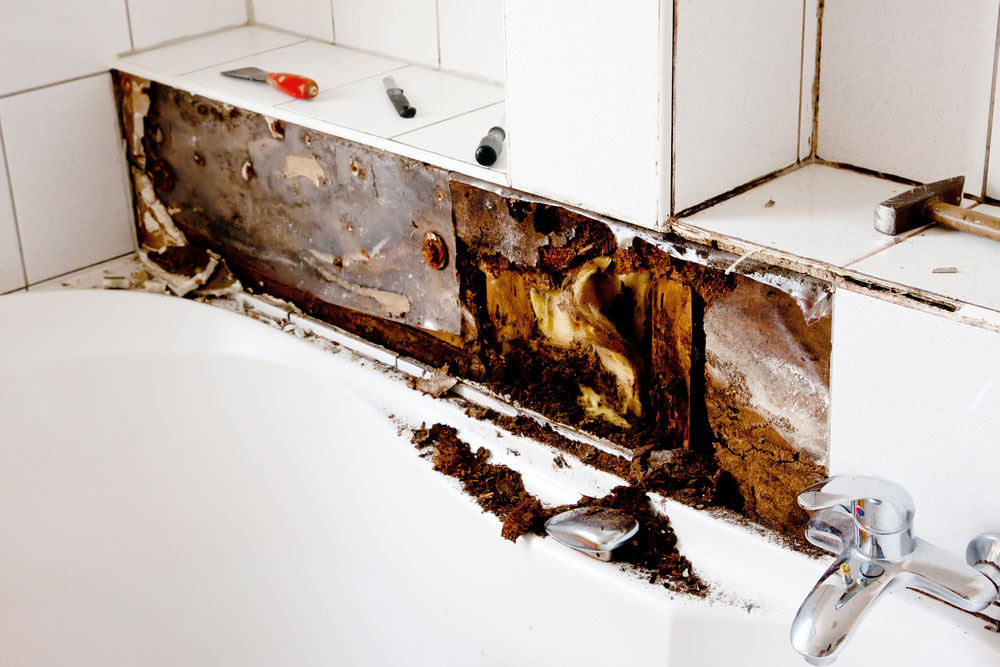How to Prevent Water Damage in Your Bathroom
How to Prevent Water Damage in Your Bathroom
Blog Article
Are you on the lookout for critical info on Common Causes of Water Damage in a Bathroom?

The washroom is very susceptible for damp build-up and also possible water damages due to the frequent use of water in it. This short article uses straightforward examination strategies to help spotting water damage risks.
The regular use of water in the shower room makes it very at risk for wet buildup and also possible water damages. By inspecting it routinely, you can decrease water related damages.
The following collection of examinations is very easy to execute and also must be done when in every three months in order to keep your restroom in good shape and to prevent possible water problems brought on by the bath tub, the shower, pipeline joints as well as plumbing, sinks, cupboards, as well as the toilet
Do not neglect performing these inspections and be detailed while executing them. Remember that these basic assessments can conserve you a lot of money by giving very early indicators for water damage
Bathtub and also Shower
The shower and also tub require special focus and upkeep. Inspect the ceramic tiles and change if split. Ensure that there is no missing cement between the tiles. Evaluate as well as replace split caulking at joints where the wall surfaces fulfill the floor or the bathtub. Obstructed drains pipes and pipelines issues will protect against the tub from drying and also might indicate significant issues below the bath tub. Talk to a specialist promptly to avoid architectural damages. Take note of stainings or soft areas around the bathtub wall surfaces as they may show an interior leakage.
Plumbing
Signs for water damage are hard to find because the majority of pipes are mounted inside the walls.
Pay unique interest to floor covering as well as wall surfaces wetness and also spots as they might suggest an invisible plumbing issue. Check wetness levels in adjacent rooms also.
Sinks and also Cabinets
Sinks as well as closets are subjected to dampness and moisture daily as well as are frequently ignored. Inspect on a regular basis under the sink and on the counter top over it. Repair any type of drip in the catch as it may recommend drainpipe issues. Check out the sink, slow draining pipelines might indicate an obstructed drainpipe. Replace sink seals if they are split or loosened.
The Toilet
The bathroom is an at risk water junction. Inspect the water lines and also search for leaks around the commode seat, in the hose, as well as under the water storage tank. If you detect any indications of dampness on the floor around the bathroom, look for leakages in the toilet rim and storage tank seals.
Realize that hanging toilet bowl antiperspirants enhances the opportunities for obstructions.
TIPS TO PREVENT WATER DAMAGE IN THE BATHROOM
The average household uses approximately 80-100 gallons of water per person per day. For a family of 4, that's almost 2,500 gallons of water a week! The largest portion of this consumption comes from bathroom use. Flushing the toilet uses the most water, followed by taking a shower or bath. With that much water running through the home, water damage in the bathroom is bound to happen. Knowing how to spot signs of a water leak is essential to preventing long-term damage. This guide provides you with tips to reduce the impact of water damage on your bathroom.
CAUSES OF BATHROOM WATER DAMAGE
Pipe breaks are the most common cause of water damage we see in our daily jobs. The age of a pipe plays a large role in a pipe break as well as corrosion. Over time, the metal begins to break down, allowing water to escape. Frozen pipe breaks are also a concern in the winter months. Toilet overflows caused by paper products or children flushing inappropriate items. Degraded caulking around the toilet or bathtub can allow water seepage, sometimes behind the fixture, into the subfloor or walls. Condensation forms when the water in a pipe is cooler than the air temperature. Beads of water form on the exterior of the pipes, sometimes so much so that the water begins to drip and pool below. Sink or shower backups created by poor drainage. HOW TO PREVENT WATER DAMAGE IN YOUR BATHROOM
Inspect your toilet supply line for worn or frayed hoses and replace them as needed. Winterize your plumbing to prevent a frozen pipe break. Use vent fans to prevent condensation that can lead to mold growth. Routinely check and replace degraded caulking around your toilet or bathtub. Increase the temperature in your toilet tank and insulate your pipes during the warm summer months to keep condensation from forming. Use child safety locks on the toilets. Flush only toilet paper. "Flushable" wet wipes are actually not good for your plumbing system. Additionally, feminine hygiene products should not be flushed. Prevent water from escaping the tub or shower. Make sure shower curtains are in good condition. Inspect shower doors and replace the seal strip if necessary. Wipe up any water that accumulates on the floor and use bath mats. Water left to sit can cause damage to the tiles and flooring. Refrain from using bath products containing heavy oils to avoid a clogged drain.

Do you like reading about Preventing Water Damage in the Bathroom? Create a remark directly below. We will be interested to find out your reactions about this blog posting. In hopes that you come back again later on. Sharing is nice. You never know, you will be doing someone a favor. We appreciate reading our article about Common Causes of Water Damage in a Bathroom.
Book-Now Report this page